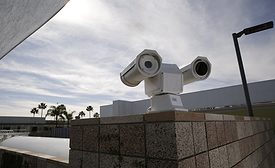Management
Five areas where centralized security systems are making urban centers safer
A centralized deployment reduces costs and is easier to use, giving public officials better tools for protecting their citizens.
May 25, 2021
Sign-up to receive top management & result-driven techniques in the industry.
Join over 20,000+ industry leaders who receive our premium content.
SIGN UP TODAY!Copyright ©2024. All Rights Reserved BNP Media.
Design, CMS, Hosting & Web Development :: ePublishing













